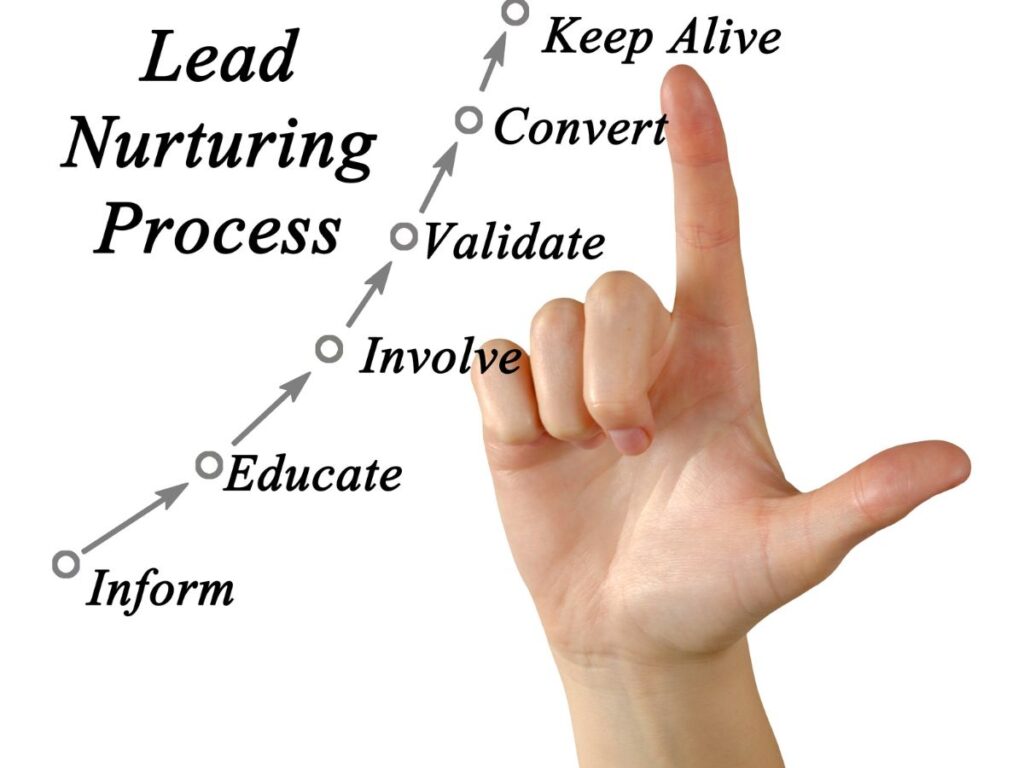Introduction
A lead nurturing strategy can be defined as a systematic approach used by businesses to build and maintain relationships with potential customers throughout their buying journey. It involves providing valuable and relevant information to leads at each stage of the sales funnel, with the aim of guiding them towards making a purchase.
This strategy focuses on understanding the needs and preferences of leads and tailoring communication and content to address those specific needs.
By nurturing leads, businesses can increase engagement, build trust, and ultimately convert them into loyal customers.
Importance of lead nurturing in the sales process
Lead nurturing plays a crucial role in the sales process as it helps to build and maintain relationships with potential customers. By providing valuable and relevant information to leads at every stage of the buyer’s journey, businesses can establish trust and credibility, ultimately increasing the likelihood of conversion.

Through personalized communication and targeted content, lead nurturing allows companies to address the specific needs and pain points of their prospects, guiding them toward making a purchase decision. This ongoing engagement not only helps to keep leads engaged and interested but also enables businesses to stay top-of-mind and differentiate themselves from competitors.
Overall, lead nurturing is an essential strategy for maximizing sales opportunities and driving long-term customer loyalty.
In this post, you will learn about how to start a lead nurture strategy, the duration, and other key elements of a successful lead nurturing campaign.
How to start lead nurturing campaigns
Initiating lead nurturing campaigns requires a strategic approach to engage and build relationships with potential customers.
To begin, it is crucial to identify your target audience and understand their needs and preferences. Conduct thorough market research and analyze customer data to segment your leads effectively. This segmentation will enable you to tailor your nurturing campaigns to specific groups, ensuring personalized and relevant content.

Once you have identified your target audience, the next step is to create compelling content that will capture their attention and provide value.
Develop a content strategy that aligns with your customers’ pain points and interests. This could include informative blog posts, educational videos, or engaging social media content. By offering valuable information and solutions, you can establish yourself as a trusted authority in your industry and nurture leads towards conversion.
In addition to creating valuable content, it is essential to leverage marketing automation tools to streamline and automate your lead-nurturing campaigns. These tools can help you track and analyze customer interactions, allowing you to deliver timely and personalized messages.
By setting up automated workflows, you can send targeted emails, trigger follow-up actions based on customer behavior, and track the effectiveness of your campaigns. Regularly monitor and optimize your campaigns based on data and feedback to ensure continuous improvement and maximize your lead nurturing efforts.
What makes a good Lead Nurturing Campaign?
The key components of an effective lead nurturing campaign involve creating personalized and targeted content that resonates with the needs and interests of your leads. By understanding your audience and segmenting them based on their behavior and preferences, you can tailor your messaging to provide value at each stage of the buyer’s journey.
Utilizing marketing automation tools to deliver timely and relevant communication, as well as tracking and analyzing data to optimize your strategy, are also crucial aspects of a successful lead-nurturing campaign.
By continuously refining and adapting your approach based on insights gained from metrics and feedback, you can build stronger relationships with your leads and guide them toward conversion.
How long should a lead nurture campaign be?
The ideal duration for a lead nurture campaign depends on various factors and can vary from one business to another. It is crucial to consider the complexity of your product or service, the buying cycle of your target audience, and the level of engagement required to convert leads into customers.
Generally, a lead nurture campaign should last long enough to build trust, educate prospects about your offerings, and guide them through the decision-making process. This could range from a few weeks to several months, depending on the nature of your industry and the specific goals of your campaign.
It is important to continuously monitor and analyze the effectiveness of your campaign to make any necessary adjustments and ensure optimal results.
What are the three key elements of creating a lead nurturing strategy?
To develop an effective lead nurturing strategy, it is crucial to identify and focus on three key elements.
Understand your Target Audience

Firstly, understanding your target audience is essential. By conducting thorough research and analysis, you can gain insights into their needs, preferences, and pain points. This knowledge will enable you to tailor your nurturing efforts to address their specific challenges and provide valuable solutions.
Create Personalized and Engaging Content
Secondly, creating engaging and personalized content is vital. By delivering relevant and timely information through various channels, such as emails, social media, and webinars, you can build trust and credibility with your leads.
Implement Lead Scoring System
Lastly, implementing an effective lead-scoring system is crucial. By assigning scores based on lead behavior and engagement, you can prioritize and segment your leads, ensuring that your sales team focuses on the most qualified prospects.
What is the difference between lead generation and lead nurturing?
Lead generation and lead nurturing are two distinct processes in the realm of marketing and sales.
Lead generation refers to the initial stage of identifying and attracting potential customers or leads for a business. It involves various strategies such as advertising, content marketing, and social media campaigns to capture the attention of potential customers and gather their contact information.

On the other hand, lead nurturing focuses on building relationships with these leads and guiding them through the sales funnel. It involves personalized communication, providing valuable information, and addressing their specific needs and concerns to nurture their interest and move them closer to making a purchase.
While lead generation aims to generate a large pool of potential customers, lead nurturing aims to cultivate and convert those leads into loyal customers.
Conclusion
In conclusion, a lead nurture strategy is crucial for businesses to build and maintain relationships with potential customers by providing valuable information tailored to their needs, ultimately increasing engagement and conversion rates.










